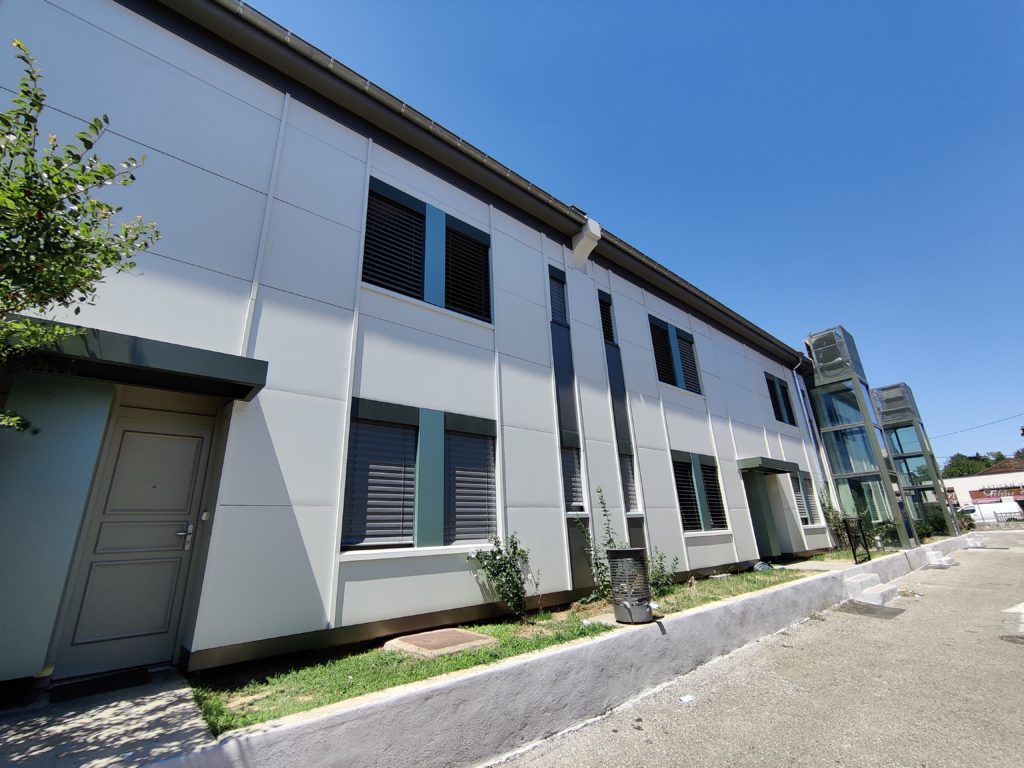Est Métropole Habitat showcased the implementation of HEART’s innovative and holistic retrofit toolkit in a demonstration case in Lyon, inspiring stakeholders and triggering its replication.
Funded by the Horizon 2020 program, through the application of an innovative toolkit that makes existing buildings “smarter”, HEART aims to reduce energy consumption significantly. It presents overall savings on heating, summer air conditioning and domestic hot water production variable between 60% and 90%, and it improves comfort for the inhabitants, who manage their consumption directly.
The toolkit has been installed in two demo social housing residential buildings in Saint-Priest (Lyon, France) and Bagnolo in Piano (Reggio Emilia, Italy). The first results from the monitored data in the Italian building demonstrate that even just an energy-efficient retrofit of windows could reduce the annual heating demand by about 16% (from 65.2 to 54.3kWh/m2).
The main local housing and renovation stakeholders met on Wednesday, 6 July, in Saint-Priest to take stock of the renovation works. Tenants’ representatives from EMH Board, the City Council housing service and Écoréno’v, a Metropole of Lyon’s service, were present to advise and support eco-renovation projects in private housing. They learnt directly from the team implementing the project in the building belonging to Est Métropole Habitat (EMH), the social housing organisation in Lyon and a member of the HEART Consortium.

After an introduction from EMH and Claudio del Pero, the Project Coordinator from Politecnico di Milano, attendants enjoyed a guided tour through the building. It is a large multifamily house built in 1975, with three staircases, five floors, and a net surface of about 1300 m2 divided into 26 dwellings. It was chosen to demonstrate HEART given its high energy consumption, and thanks to the renovations conducted, it has been upgraded from G-level to A-level energy rating. This makes it not only a smart building but also autonomous in terms of energy consumption and management.
Nowadays, we face a huge energy crisis in Europe, and it’s getting hard for tenants to assume the bills. HEART aims to decrease the energy cost for the social housing sector and, most importantly, improve the tenants’ comfort level.
Claudio del Pero, HEART Project Coordinator.
The installation of the HEART toolkit in this building includes an insulated façade resistant to weather conditions and any other activity, as well as a windows refurbishment. The PV tiles installed on the roof provide free and environmentally friendly electricity for the whole common equipment in the building, and they will feed the Multi-Input Multi-Output (MIMO) system. This is the core of the toolkit, a cloud-based platform that connects all the elements and gathers the energy information from all the apartments, allowing smart energy management and involving the occupants in the process.
This building also includes high-efficiency heat pumps that will be connected to 54 smart-fan coils, the latest element to be installed soon and which provide heating and cooling to the apartments. There is also thermal storage in the basement of about 8000 litres and a battery pack of 6 kWh to increase the on-site self-consumption and avoid grid overloading.

Challenges and solutions
Implementing an innovative project for the first time is always challenging, and the events since the pandemic and the supply-chain crisis years until the inflation and the war in Ukraine have not made things easier. The advantage of carrying out the works without the tenants leaving their homes has meant that they have experienced all the delays and added difficulties. The tenants’ comfort level has already increased significantly, even if some toolkit elements are still being finalised.
Nevertheless, the EMH team surfed the constant challenges and found creative and practical solutions to make the project work. Now that it is close to an end, they conclude that big European projects involving partners and cooperation across many countries have many complexities. Still, it uniquely allows great innovations to improve people’s lives, which would not be possible otherwise.
In terms of targets and replication, the European Commission’s long-term strategy to fight the climate and energy crisis consists of a massive EU building stock renovation, as pointed out in the Renovation Wave. Since buildings account for 40% of EU energy demand and 36% of carbon dioxide (CO2) emissions, we need to decarbonise existing buildings to move further towards a green transition by 2050.
The HEART system can become a control and guarantee tool, capable of stimulating, supporting and promoting public and private incentives and financial investments in the energy efficiency of buildings. The optimal field of application of HEART is represented by existing buildings subjected to a smart building upgrade, but the system can also be effectively used in new buildings. The renovation has many challenges ahead. Ambitious targets are needed, but support and incentives for the final consumer and for all the stakeholders involved are essential for the Renovation Wave to overcome the potential crisis and succeed.